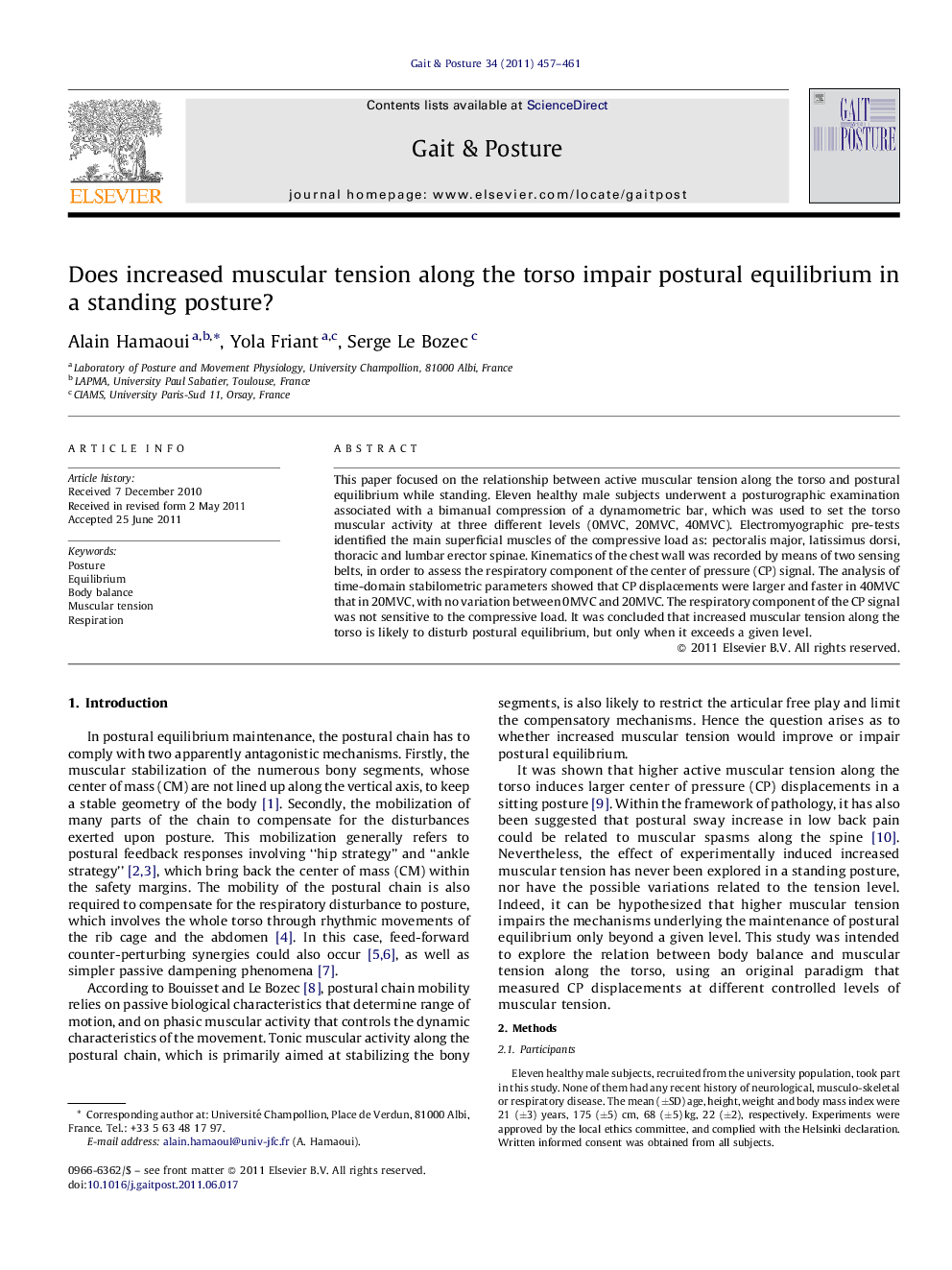| Article ID | Journal | Published Year | Pages | File Type |
|---|---|---|---|---|
| 4056656 | Gait & Posture | 2011 | 5 Pages |
This paper focused on the relationship between active muscular tension along the torso and postural equilibrium while standing. Eleven healthy male subjects underwent a posturographic examination associated with a bimanual compression of a dynamometric bar, which was used to set the torso muscular activity at three different levels (0MVC, 20MVC, 40MVC). Electromyographic pre-tests identified the main superficial muscles of the compressive load as: pectoralis major, latissimus dorsi, thoracic and lumbar erector spinae. Kinematics of the chest wall was recorded by means of two sensing belts, in order to assess the respiratory component of the center of pressure (CP) signal. The analysis of time-domain stabilometric parameters showed that CP displacements were larger and faster in 40MVC that in 20MVC, with no variation between 0MVC and 20MVC. The respiratory component of the CP signal was not sensitive to the compressive load. It was concluded that increased muscular tension along the torso is likely to disturb postural equilibrium, but only when it exceeds a given level.
